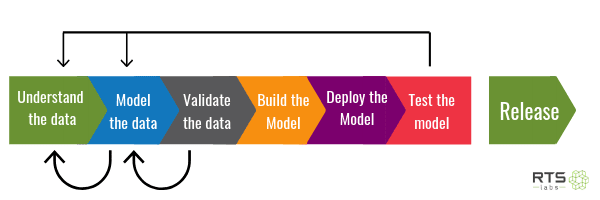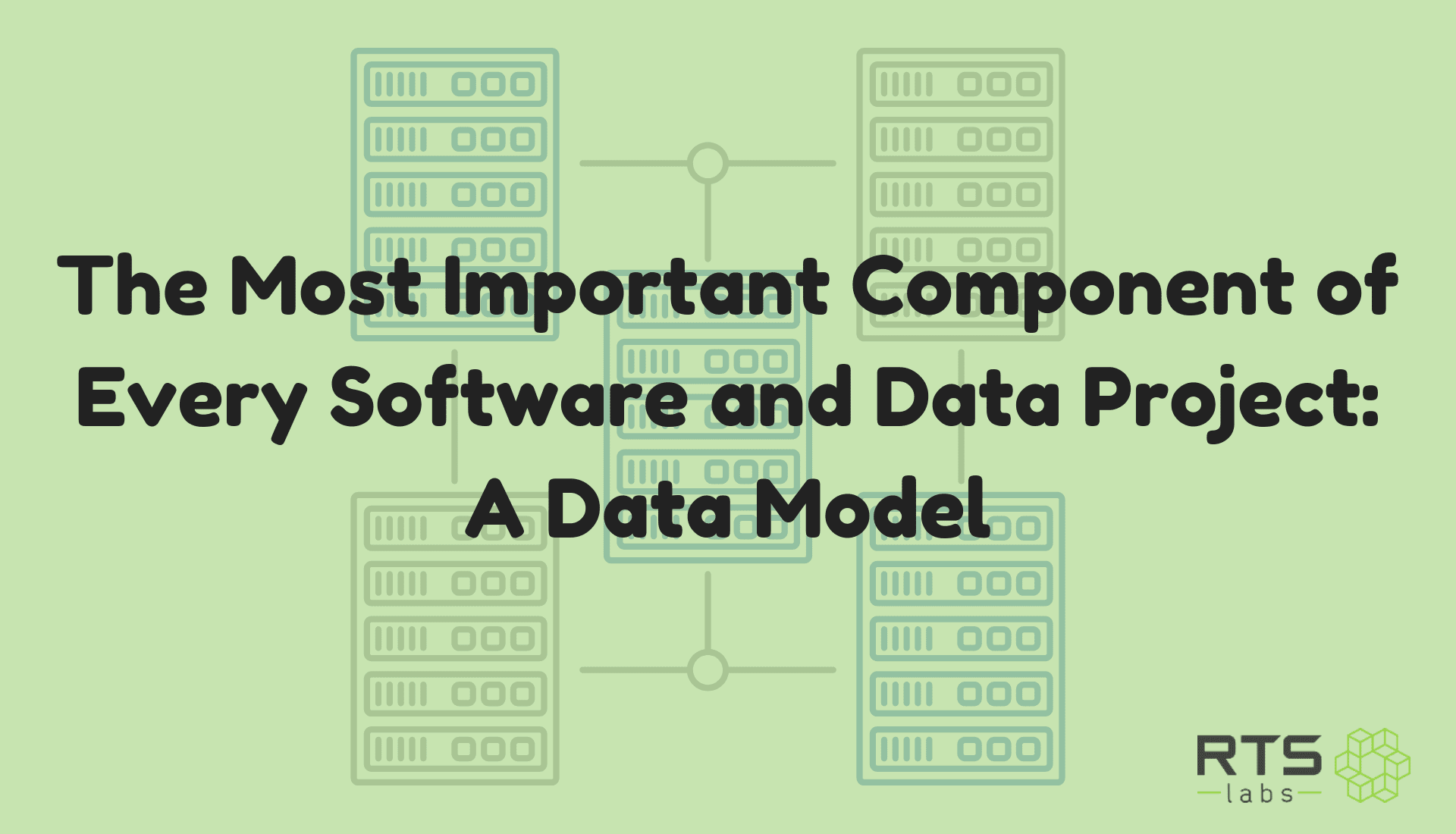When a contractor begins building a new house or starts a remodel, she doesn’t just start pulling in materials to build as she goes. She starts by hiring an architect, discussing requirements with the client, and getting blueprints that will give her team a plan for the final project. In the same vein, when a developer begins a software project involving big data, before any line of code is written, they bring on a data scientist who talks with the client about business needs and goals. From there, they then build a data model.
In the software and data world, a data model is the base for which everything is built. It’s the blueprint to your data project and the bones of your software. Without a solid data model, your software or data project could be underperforming and not delivering the data analytics you need. That’s why a data model is the most important component of every software and data project.
What is a data model?
Before we get into the “why”, we should start with the “what.” Going back to our analogy, a data model is the blueprint for your entire information system. It lays out the organizational elements of data, how they will be standardized, and how they relate to one another. It determines your data structure and provides the definition and format of the data. Having this structure and formatting in place in turn ensures the information coming in is compatible and interoperable, so your different applications can share your data across all your systems. Sounds important, right? You bet! It’s critical because without this step, your data is essentially unusable.
Why are data models important?
Like a blueprint, your data model represents a framework for the relationships within your database. It provides the structure that will support your analytical needs. It also validates business requirements to ensure proper functionality.
Without a data model, your database will fail to meet user requirements, not be able to adapt to simple changes, can develop structural anomalies as requirements evolve, and could cause data quality issues. All these issues lead to costly maintenance projects in the future.
How is a good data model constructed?
Data needs structure in order for computers to deal with it and users to make sense of it. Whether you’re building software, creating artificial intelligence, automating a building, working with IoT devices, integrating data, or developing a business application, you need a solid data model to help make sense of the data and form the backbone of your project.
What is the most important consideration in data modeling?
In order for a data model to be effective, the right data modeling methodology needs to be chosen, and a prescribed process for crafting the data model should be followed.

Graphic of the data model process reads: Understand the data > Model the data > Validate the data (repeat first three steps as necessary) > Build the model > Deploy the model > Test the model > Release
In addition to that, the following requirements need to be met:
- Business objectives are defined.
- The data model is designed to be scalable.
- Data is defined in a way users will understand.
- All pieces of information required for the project are properly recognized.
- The requirements are known and dependencies are clear before implementation.
- There are no redundancies in the information.
- The information is made available in a predictable, logical place.
Choose what type of data model you need
Another challenge to creating a data model is making sure you choose the right type of model. There are a number of data modeling methodologies to choose from. Which model will work best for you will depend on the requirements of your project, as well as your business objectives?
Some of the different data models and how they are used include:
- Flat Model – The simplest data model, where all the data is in a single table.
- Hierarchical Model – Data is organized into a tree-like structure and each record has a root.
- Network Model – This model builds on the hierarchical model, allowing many-to-many relationships between linked records.
- Relational Model – Data is sorted into tables (called relations) that consist of columns and rows.
- Star Schema Model – Used for data warehouses and dimensional data marts. This model consists of one or more fact tables referencing any number of dimension tables.
- Data Vault Model – Records long-term historical data from multiple data sources.
What are the true benefits of a good data model?
Now that you know what a data model is, why it’s important, and what the risks are, let’s talk about the many benefits that come from a solid, well-designed data model.
When you take the time to create a data model at the start of your data or software project, it means you’ve taken the time to really think through your problem and what you need to solve it. Because you’ve taken this step, your problem is much more likely to be well defined, and you’re more likely to have given careful consideration to different approaches. In turn, you’re more likely to choose the best approach for you. Having a strong start and a good road map AKA data model ultimately minimizes the impact to your code and helps your team build the right solution the first time. It also provides you with better focus as to what you’re building – with a better understanding of the scope of the project.
Your data model also becomes a graphical representation of the project, allowing stakeholders and staff to see and understand what’s being built. As you can see, it’s a crucial component to the planning phase of your project. Without it, your developers are essentially building in the dark.
What more accessible data could mean for you and your organization
Could your business benefit from harnessing your data better? Have a data project in mind but not sure where to start? Our team of data scientists can help. Check out this case study of how we helped a client realize the power of their data to increase profits and customer satisfaction – and then call us even if you’re just a little curious to find out what’s possible for your organization.






